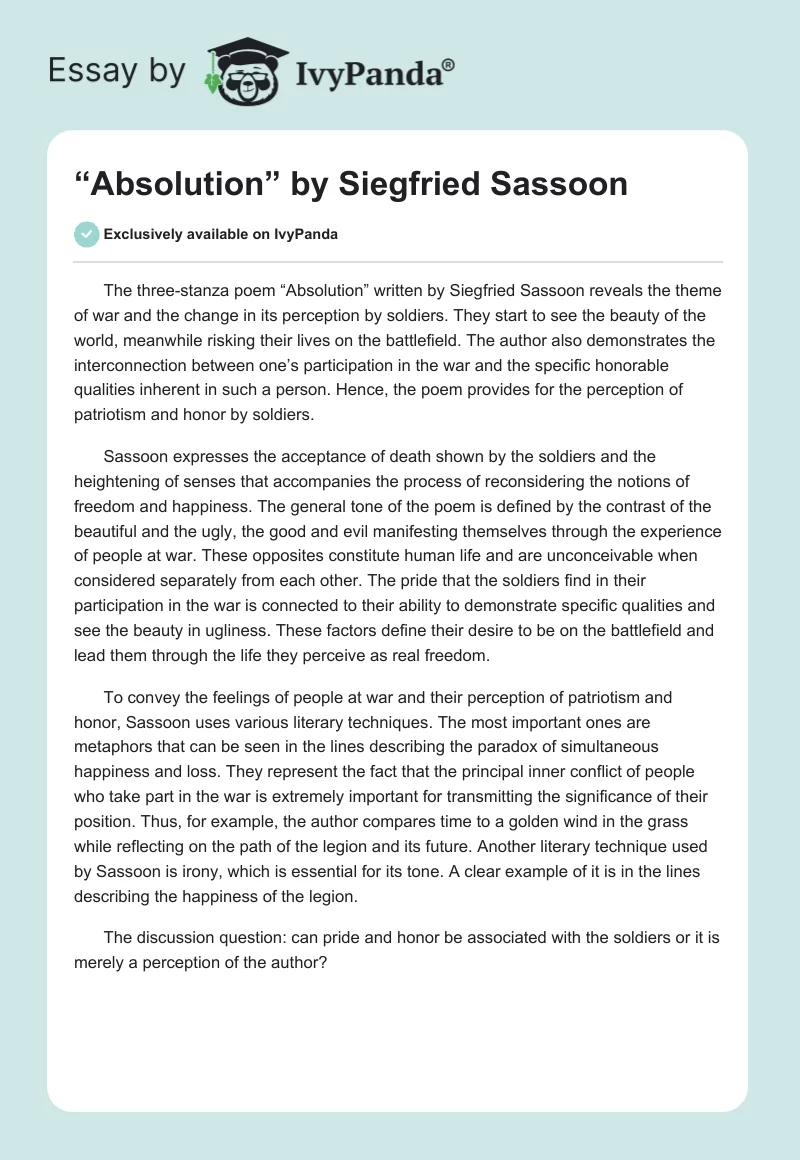The three-stanza poem “Absolution” written by Siegfried Sassoon reveals the theme of war and the change in its perception by soldiers. They start to see the beauty of the world, meanwhile risking their lives on the battlefield. The author also demonstrates the interconnection between one’s participation in the war and the specific honorable qualities inherent in such a person. Hence, the poem provides for the perception of patriotism and honor by soldiers.
Sassoon expresses the acceptance of death shown by the soldiers and the heightening of senses that accompanies the process of reconsidering the notions of freedom and happiness. The general tone of the poem is defined by the contrast of the beautiful and the ugly, the good and evil manifesting themselves through the experience of people at war. These opposites constitute human life and are unconceivable when considered separately from each other. The pride that the soldiers find in their participation in the war is connected to their ability to demonstrate specific qualities and see the beauty in ugliness. These factors define their desire to be on the battlefield and lead them through the life they perceive as real freedom.
To convey the feelings of people at war and their perception of patriotism and honor, Sassoon uses various literary techniques. The most important ones are metaphors that can be seen in the lines describing the paradox of simultaneous happiness and loss. They represent the fact that the principal inner conflict of people who take part in the war is extremely important for transmitting the significance of their position. Thus, for example, the author compares time to a golden wind in the grass while reflecting on the path of the legion and its future. Another literary technique used by Sassoon is irony, which is essential for its tone. A clear example of it is in the lines describing the happiness of the legion.
The discussion question: can pride and honor be associated with the soldiers or it is merely a perception of the author?

